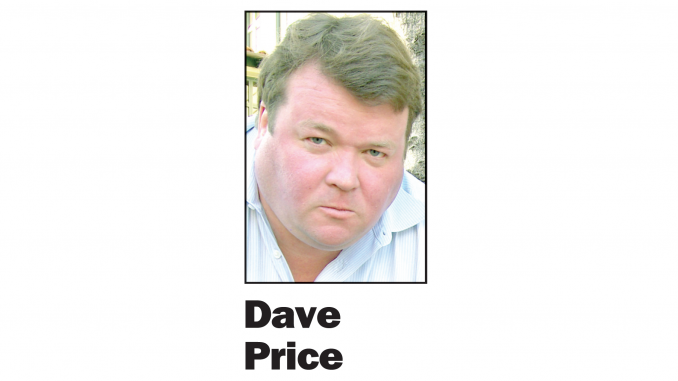
OPINION
BY DAVE PRICE
Daily Post Editor
This phenomenon called “fake news” isn’t new at all. Journalists have been battling purveyors of phony stories for years.
You haven’t heard much about it in the past because these stories never were printed. Reputable news organizations check the facts and investigate claims before publishing stories. Today you hear about fake news more often because anybody can publish it online, no fact checking required.
While the term “fake news” is new, the concept goes back to the earliest days of newspapers.
In 1734, Benjamin Franklin, who was a Philadelphia newspaper publisher among other things, printed the obituary of the competing paper’s publisher on the front page. The only problem was that he wasn’t dead. It was a hoax by Franklin.
In 1897, newspaper publisher William Randolph Hearst put out the fake story that the Spanish had sunk the battleship USS Maine in Havana, Cuba. That riled up the public and led to the Spanish-American war.
Fast forward to 1996. TWA Flight 800 crashed 12 minutes after taking off from JFK airport in New York and all 230 people aboard died. Investigators determined the 747’s center fuel tank exploded, most likely caused by a spark in its vapor-filled center tank. Terrorism was ruled out, as was the notion of a U.S. Navy missile.
But that didn’t stop the conspiracy theories.
Pierre Salinger Syndrome
Enter 71-year-old Pierre Salinger, who was John Kennedy’s press secretary and later an ABC News correspondent. The Internet was new then, and Salinger found a document online that falsely claimed a missile had brought down the jetliner. Salinger was duped because he believed that what he found online had to be the truth. Since then “the Pierre Salinger Syndrome” has entered the lexicon — the belief that everything on the Internet is true. Salinger, after years of suffering from dementia, died of heart failure in 2004.
In the news business, reporters and editors are confronted by people pushing fake stories every day.
A lot of the fake stories come from public relations people who are paid to get happy news about their clients into the paper. Not all PR people are paid liars, but there are so many unscrupulous ones that the public relations profession (if you can call it that) is tarnished.
UFO reports
And some fake stories are simply bizarre.
In the early 2000s, people would often call in reports of UFOs to my newsroom. We got so many calls like this that one editor would routinely answer his phone by saying, “UFO Desk.” I think many of these reports were alcohol related.
A couple of years ago, a serious looking man with a briefcase came to my office and wanted to talk about 9/11. I sat down with him and he showed me photographs and diagrams that he said proved former President George W. Bush and Vice President Dick Cheney ordered the Army to plant bombs in the World Trade Center to cause the towers to fall when they were hit with by the jetliners. He was perfectly serious. After about 5 minutes of this, I made an excuse about how I had to cut the meeting short. He warned me that if the Post didn’t print his story, we would be a laughingstock when the truth comes out.
Frequently, people want us to print fake stories about police corruption. Somebody will get arrested, and they’re mad that they were caught, so they gin up an elaborate theory about how the police are involved in a conspiracy to get them. Obviously I would print a real story about police corruption, but I hate wasting my time with made-up claims by people who just want to get even with the cops.
Who needs facts?
Of course a lot of fake news revolves around politics. Over the weekend, I had a conversation with a woman in Palo Alto who was convinced that a local politician was up to no good. She didn’t like this politician to start with, and now she had discovered some theories online that confirmed her belief. The facts of the situation didn’t matter to her. She wanted me to ignore the facts and print a conspiracy theory. I declined, telling her that we need facts, not unfounded speculation.
That’s the danger of the fake news phenomenon. People tend to believe fake stories that confirm their beliefs. And if they see a factual story that puts their beliefs into question, they label it “fake news” even though it isn’t.
Editor Dave Price’s column appears on Mondays. His email address is [email protected].
